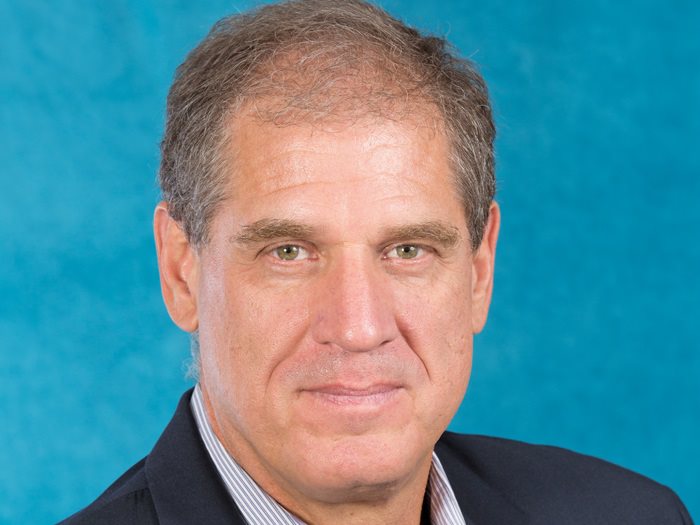Working from Home: The Workers’ Compensation Exposures Employers Must Review

The pandemic has caused an incredible — and likely permanent — shift in the workforce.
For starters, the onset of the coronavirus saw more than a third of employees working from home, up from 6% pre-pandemic. Businesses adjusted in a matter of weeks. Home offices became the norm.
As the pandemic progressed, we entered another phenomena: the Great Resignation. 2021 saw a record “quit rate” that reached a 20-year high in November and continues through to today. Things like work flexibility, lack of opportunities to advance and low pay are among the many reasons people are leaving their jobs.
In order to find and retain talent, employers are looking for ways to accommodate this new era of work. One way has been to offer work-from-home options that hadn’t been offered in the past.
“There was some remote work [pre-pandemic],” said Anas Al-hamwi, regional vice president – greater North West region, Walgreens Boots Alliance and board member for the National Safety Council, as well as a member of the National Comp advisory board.
“Right now, that landscape is completely different with different expectations. You have to manage those expectations. You have to think of risk and the liability side of it.”
It’s an exciting time for employers, because with a remote workforce, talent can come from all reaches. But there are also new risks that come with a shift in the work environment. And what are employers to do when a remote work claim rolls in?
Workers’ Compensation Claims and the Remote Workforce
When it comes to the remote workforce, the type of workers’ compensation claims coming in vary.
Al-hamwi noted occupational health and injury claims can arise from at-home work. Most commonly seen are issues stemming from poor ergonomics, like repetitive strain, prolonged exposure to abnormal temperatures or vibration, prolonged awkward posture, or forceful exertion or pressure upon a particular body part.

Anas Al-hamwi, regional vice president – greater North West region, Walgreens Boots Alliance
But another area to keep top-of-mind, Al-hamwi said, is mental health.
“Mental health challenges can impact some employees. Though, in my opinion, there’s not enough data yet to say how this will trend and what it’s going to look like, but the remote setting puts the workforce in a different environment,” he said.
It’s one area where claims could start to arise, especially coming out of pandemic-induced shutdowns. Many found the isolation and uncertainty of the past two years taxing on their mental health, with the World Health Organization reporting a 25% increase in the prevalence of depression and anxiety worldwide.
Another risk area Al-hamwi mentioned was that workers could potentially venture out of the home office to a coffee shop to conduct their business, opening up comp claims to even more complexity. In those instances, it is important for employers to review what their workers’ compensation policy covers and communicate that to their employees.
“It’s different compared to your typical workplace, where you have a clear understanding of what your policies and procedures cover,” said Al-hamwi.
Staying abreast of potential workers’ compensation challenges and knowing what a policy covers, while also working to accommodate a workforce that desires to work at home, will go a long way toward preventing comp-related litigation, as well.
Best Practices Employers Can Take
When thinking about the new reality of the workforce, with remote workers, in-office and the hybrid model in between, it’s important employers take the time to review their programs.
“Whether remote, whether hybrid, you have to think of it from the perspective of the team member and what that’s going to look like,” Al-hamwi said. “You have to have what I call foundational principles to have that conversation and to build the right expectation as an employer.”
Company culture is a big part of this equation, Al-hamwi said. Establishing a culture of trust is essential to paving the way for clear expectations. Trust also helps employees feel connected to their work and the workplace, even if their office is mostly at home.
“The employee needs to feel that connection, and that’s really worked out in how you design this program between employees, leaders and teams. Also, think of that trust and care as part of safety and work,” he said.
Self accountability is another best practice employers can adopt to minimize the risk of at-home workplace injury.
“The culture of self accountability, in general, whether self accountability for everyday activities, self accountability for work outcome, but also self accountability for your own care and your own safety is found in that trust,” said Al-hamwi.
It’s important that workers sitting in their homes, or even at the local coffee shop, understand their occupational health and wellbeing risks. It’s also important that their employer communicate those risks and give the worker an opportunity to self-evaluate to make best choices.
“Self accountability, in my opinion, is [a huge part of] how you are able to minimize risk.”
Where Can I Learn More?
As the world shifts, and the workforce right along with it, employers are best served when they have the most accurate information at their disposal. So, where can employers go to learn more about workers’ comp exposures and their remote workforce?
Al-hamwi will be speaking at the 2022 CLM Workers’ Compensation and Retail, Restaurant & Hospitality Conference this May 18-20. Hosted in Chicago, this conference is packed with informational sessions, networking opportunities and more, including Al-hamwi’s session on Thursday at 11:15 a.m., “The Dawning of the Age of Remote Work.”
Attendees, he said, will take away some key lessons, including “the first approach [when addressing this new workforce] is the collective approach that we’re trying to bring to this session. When you think of it from the perspective of the employer and operational side of the business, also the risk management side, then you can speak to the actual workers’ compensation.”
Al-hamwi will be joined by speakers Michelle Leighton, partner and national claims advocacy & consulting leader at Conner Strong & Buckelew; Michele Punturi director of the workers’ compensation department at Marshall Dennehey; and Robin Roeder, senior vice president of risk management for Sedgwick.
In addition to discussing the health and safety needs of the remote workforce, the speakers plan to focus on evaluating, managing and mitigating remote work claims while avoiding litigation under the Workers’ Compensation Act.
Check out CLM’s site for more info. &










